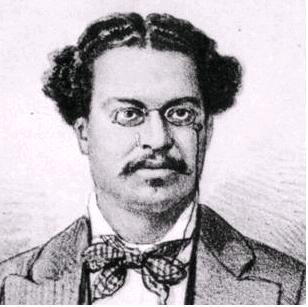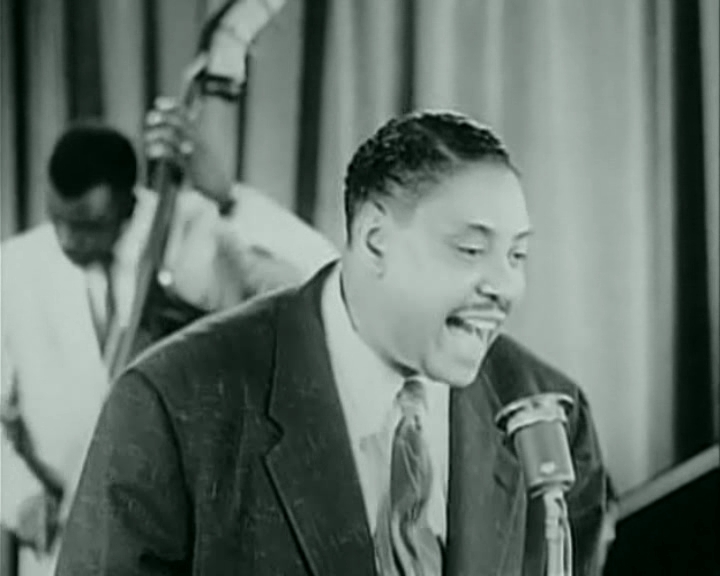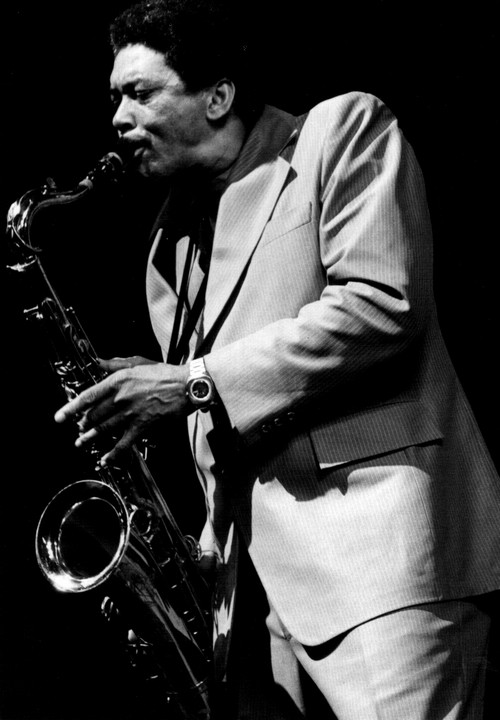|
Saxophonists
Instruments key: * s, Sopranino * S, Soprano * A, Alto * T, Tenor * B, Baritone * b, Bass * c, Contrabass (or tubax) * sc, Subcontrabass Indicators key: *X, instrument has been used by person or group *X, instrument has been used by person or group, but much less often than other X-marked instruments *C, person or group uses a C melody saxophone (either as primary instrument, or in addition to the normal tenor sax) *F, person or group uses an F Mezzo-soprano saxophone in addition to the E♭ alto sax. Fictional saxophonists * Bleeding Gums Murphy (''The Simpsons'') * Lisa Simpson - (''The Simpsons'') * Henry Jones Jr. (''The Young Indiana Jones Chronicles'', soprano) * Zoot (''The Muppets'') See also *Lists of musicians * List of jazz saxophonists References Notes {{noteslist Saxophonists Saxophone The saxophone (often referred to colloquially as the sax) is a type of single-reed woodwind instrument with a conical body, usually made of brass. As with all sin ... [...More Info...] [...Related Items...] OR: [Wikipedia] [Google] [Baidu] |
Tenor Saxophone
The tenor saxophone is a medium-sized member of the saxophone family, a group of instruments invented by Adolphe Sax in the 1840s. The tenor and the alto are the two most commonly used saxophones. The tenor is pitched in the key of B (while the alto is pitched in the key of E), and is a transposing instrument in the treble clef, sounding an octave and a major second lower than the written pitch. Modern tenor saxophones which have a high F key have a range from A2 to E5 (concert) and are therefore pitched one octave below the soprano saxophone. People who play the tenor saxophone are known as "tenor saxophonists", "tenor sax players", or "saxophonists". The tenor saxophone uses a larger mouthpiece, reed and ligature than the alto and soprano saxophones. Visually, it is easily distinguished by the curve in its neck, or its crook, near the mouthpiece. The alto saxophone lacks this and its neck goes straight to the mouthpiece. The tenor saxophone is most recognized for ... [...More Info...] [...Related Items...] OR: [Wikipedia] [Google] [Baidu] |
Baritone Saxophone
The baritone saxophone (sometimes abbreviated to "bari sax") is a member of the saxophone family of instruments, larger (and lower-pitched) than the tenor saxophone, but smaller (and higher-pitched) than the bass saxophone, bass. It is the lowest-pitched saxophone in common use — the bass, contrabass saxophone, contrabass and subcontrabass saxophone, subcontrabass saxophones are relatively uncommon. Like all saxophones, it is a single-reed instrument. It is commonly used in concert bands, chamber music, military bands, big bands, and jazz combos. It can also be found in other ensembles such as Rock music, rock bands and marching bands. Modern baritone saxophones are pitched in E. History The baritone saxophone was created in 1846 by the Belgian instrument maker Adolphe Sax as one of a family of 14 instruments. Sax believed these instruments would provide a useful tonal link between the woodwinds and brasses. The family was divided into two groups of seven saxophones each, ... [...More Info...] [...Related Items...] OR: [Wikipedia] [Google] [Baidu] |
Sopranino Saxophone
The sopranino saxophone is the second-smallest member of the saxophone family. It is tuned in the key of E♭, and sounds an octave higher than the alto saxophone. A sopranino in F was also described in Adolphe Sax's patent, an octave above an F alto (mezzo-soprano), but there are no known built instruments. The sopranino saxophone has a sweet sound and although it is one of the least common of the saxophones in regular use today, it is still being produced by saxophone manufacturers Orsi and Rampone & Cazzani in Italy, Henri Selmer Paris, Yanagisawa of Japan, and Chinese makers Jinbao and Wessex. Due to their small size, sopraninos are usually built straight like a clarinet, although Orsi make both straight and curved sopraninos, with the appearance of a miniature alto. The original patented saxophone family, as developed by Adolphe Sax, included E♭ and B♭ saxophones in the voices of sopranino, soprano, alto, tenor, baritone, bass, contrabass, and subcontrabass inst ... [...More Info...] [...Related Items...] OR: [Wikipedia] [Google] [Baidu] |
George Adams (musician)
George Rufus Adams (April 29, 1940 – November 14, 1992) was an American jazz musician who played tenor saxophone, flute and bass clarinet. He is best known for his work with Charles Mingus, Gil Evans, Roy Haynes and in the quartet he co-led with pianist Don Pullen, featuring bassist Cameron Brown (musician), Cameron Brown and drummer Dannie Richmond. He was also known for his idiosyncratic singing. Biography George Adams was born in Covington, Georgia, on April 29, 1940. He first started playing piano at the age of eleven and switched to tenor saxophone in high school. Later on, he went study at the Clark College and got lessons on flute by Wayman Carver. As a teenager, George Adams frequently gained performance experience by playing with local R&B bands. In 1961, he accompanied singer Sam Cooke on a tour. At this point, Adams was based out of Cleveland where he spent a great deal of time studying and working with organ trios alongside pianist and organist, Bill Doggett. The tw ... [...More Info...] [...Related Items...] OR: [Wikipedia] [Google] [Baidu] |
Fred Anderson (musician)
Fred Anderson (March 22, 1929 – June 24, 2010) was an American jazz tenor saxophonist who was based in Chicago, Illinois. Anderson's playing was rooted in the swing music and hard bop idioms, but he also incorporated innovations from free jazz. Anderson was also noted for having mentored numerous young musicians. Critic Ben Ratliff called him "a father figure of experimental jazz in Chicago". Writer John Corbett referred to him as "scene caretaker, underground booster, indefatigable cultural worker, quiet force for good." In 2001, author John Litweiler called Anderson "the finest tenor saxophonist in free jazz/underground jazz/outside jazz today." Biography Anderson was born in Monroe, Louisiana. When he was ten, his parents separated, and he moved to Evanston, Illinois, where he initially lived with his mother and aunt in a one-room apartment. When Anderson was a teenager, a friend introduced him to the music of Charlie Parker, and he soon decided he wanted to play saxophone, ... [...More Info...] [...Related Items...] OR: [Wikipedia] [Google] [Baidu] |
Gene Ammons
Eugene "Jug" Ammons (April 14, 1925 – August 6, 1974), also known as "The Boss", was an American jazz tenor saxophonist. The son of boogie-woogie pianist Albert Ammons, Gene Ammons is remembered for his accessible music, steeped in soul and R&B. Biography Born in Chicago, Illinois, Ammons studied music with instructor Walter Dyett at DuSable High School. Ammons began to gain recognition while still at high school when in 1943, at the age of 18, he went on the road with trumpeter King Kolax's band. In 1944, he joined the band of Billy Eckstine (who bestowed on him the nickname "Jug" when straw hats ordered for the band did not fit), playing alongside Charlie Parker and later Dexter Gordon. Performances from this period include "Blowin' the Blues Away," featuring a saxophone duel between Ammons and Gordon. After 1947, when Eckstine became a solo performer, Ammons then led a group, including Miles Davis and Sonny Stitt, that performed at Chicago's Jumptown Club. In 1949, Ammons r ... [...More Info...] [...Related Items...] OR: [Wikipedia] [Google] [Baidu] |
Choro
''Choro'' (, "cry" or "lament"), also popularly called ''chorinho'' ("little cry" or "little lament"), is an instrumental Brazilian popular music genre which originated in 19th century Rio de Janeiro. Despite its name, the music often has a fast and happy rhythm. It is characterized by virtuosity, improvisation and subtle modulations, and is full of syncopation and counterpoint. Choro is considered the first characteristically Brazilian genre of urban popular music. The serenaders who play choros are known as ''chorões''. Choro instruments Originally ''choro'' was played by a trio of flute, guitar and cavaquinho (a small chordophone with four strings). Other instruments commonly played in choro are the mandolin, clarinet, saxophone, trumpet and trombone. These melody instruments are backed by a rhythm section composed of 6-string guitar, seven-string guitar (playing bass lines) and light percussion, such as a pandeiro. The cavaquinho appears sometimes as a melody instrume ... [...More Info...] [...Related Items...] OR: [Wikipedia] [Google] [Baidu] |
Luiz Americano
Luiz Americano (27 February 1900 – 29 March 1960) was a Brazilian choro musician and composer. He was best known as a clarinetist, saxophonist and recording artiste. Early life Luiz Americano (also known as Luís Americano, Luiz Americano Rego and Luiz Americano do Rego) was born on 27 February 1900 in Aracaju where his father, Jorge Americano, was a bandmaster. He began studying music with his father when he was 13. In 1918, he joined a military band in the army in Aracaju. He was transferred to Maceió and then Rio de Janeiro. Musical career After leaving the army in 1922, he joined several orchestras to perform, compose and record popular music, especially in the choro genre, as well as popularising the saxophone. He worked with Justo Nieto, Raul Lipoff, Simon Bountman and Romeu Silva. His first recording was in 1927, playing saxophone in his own compositions of a waltz ''Leda'' and choro ''Sentimento''. He spent a short time in Argentina from 1928 until 1930. This included ... [...More Info...] [...Related Items...] OR: [Wikipedia] [Google] [Baidu] |
Marshall Allen
Marshall Belford Allen (born May 25, 1924) is an American free jazz and avant-garde jazz alto saxophone player. He also performs on flute, oboe, piccolo, and the EWI. Allen is best known for his work with Sun Ra, having recorded and performed mostly in this context since the late 1950s, and having led The Sun Ra Arkestra since 1995, after Sun Ra's death in 1993 and John Gilmore's death two years later.Jason Ankeny"Marshall Allen biography" AllMusic. Critic Jason Ankeny describes Marshall as "one of the most distinctive and original saxophonists of the postwar era." Biography Early life and military service Marshall Belford Allen was born on May 25, 1924, in Louisville, Kentucky. During the Second World War he enlisted in the 92nd Infantry Division, known as the Buffalo Soldiers Division, and was stationed in France. Allen studied alto saxophone in Paris. Music career Allen played in Europe with jazz pianist Art Simmons and saxophonist James Moody. Allen is best known fo ... [...More Info...] [...Related Items...] OR: [Wikipedia] [Google] [Baidu] |
Rhythm And Blues
Rhythm and blues, frequently abbreviated as R&B or R'n'B, is a genre of popular music that originated within African American communities in the 1940s. The term was originally used by record companies to describe recordings marketed predominantly to African Americans, at a time when "rocking, jazz based music ... [with a] heavy, insistent beat" was starting to become more popular. In the commercial rhythm and blues music typical of the 1950s through the 1970s, the bands usually consisted of a piano, one or two guitars, bass, drums, one or more saxophones, and sometimes background vocalists. R&B lyrical themes often encapsulate the African-American history and experience of pain and the quest for freedom and joy, as well as triumphs and failures in terms of societal racism, oppression, relationships, economics, and aspirations. The term "rhythm and blues" has undergone a number of shifts in meaning. In the early 1950s, it was frequently applied to blues records. Starting i ... [...More Info...] [...Related Items...] OR: [Wikipedia] [Google] [Baidu] |
Lee Allen (musician)
Lee Francis Allen (July 2, 1927 – October 18, 1994) was an American tenor saxophone player. Phil Alvin, Allen's bandmate in The Blasters, called him one of the most important instrumentalists in rock'n'roll. Allen's distinctive tone has been hailed as "one of the defining sounds of rock'n'roll" and "one of the DNA strands of rock." Allen was a key figure in New Orleans rock and roll of the 1950s and recorded with many leading performers of the early rock and roll era. He was semiretired from music by the late 1960s, but in the late 1970s returned to performing intermittently until the end of his life. Biography Allen was born in Pittsburg, Kansas, and raised largely in Denver, Colorado. He played saxophone from his childhood. A combined athletics and music scholarship from Xavier University led him to relocate to New Orleans in 1943. He fell into the city's thriving music scene, performing or recording with dozens of musicians in the early days of rock and roll and rhythm and ... [...More Info...] [...Related Items...] OR: [Wikipedia] [Google] [Baidu] |
Harry Allen (musician)
Harry Allen (born October 12, 1966) is an American jazz tenor saxophonist born in Washington, D.C. Allen plays mainstream jazz and bossa nova. He has performed live and recorded with Scott Hamilton, a tenor saxophonist to whom Allen has frequently been compared. He is best known for his work with John Colianni, Dori Caymmi, Keith Ingham, John Pizzarelli, and Bucky Pizzarelli. Early life and career Allen's father, Maurice, was a big band drummer. As a child, his father played records for him; these included recordings of tenor saxophonist Paul Gonsalves, which made a lasting impression. In high school he was an exceptional talent able to play tunes such as '' Body and Soul'' in the style of tenor players Coleman Hawkins, Ben Webster, and Flip Phillips. While in high school Allen was also influenced by recordings of Scott Hamilton. Allen graduated from Rutgers University in 1988.Dryden, Ken (July 2015) "Harry Allen". ''The New York Jazz Record''. p. 6. Allen was descr ... [...More Info...] [...Related Items...] OR: [Wikipedia] [Google] [Baidu] |






